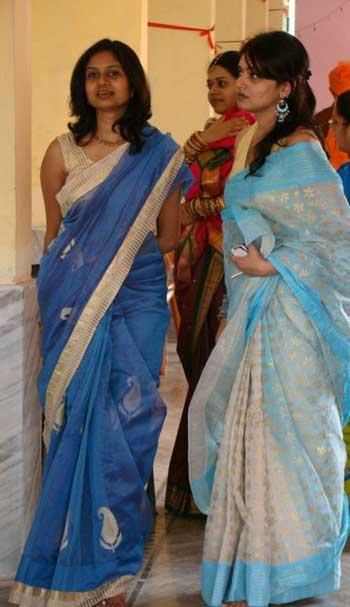Clothing can offer a great perspective from which to understand a region's culture. There're many cultures in the world that have retained traditional dressing style throughout its history.
Now let's travel to India and the Arab world to see their unique dress codes in order to learn about their cultures.
The most common costume worn by Indian women is the national dress called a Saree. The six yard cloth is draped in different styles for various regions. Flowing silks and heavy brocades can be easily maneuvered into this style.
For the men, the common traditional outfits are the Kurta Pajamas. Lungis and dhotis are also popular with men.
It's worth noting that while the traditional Indian costumes are still largely worn by a vast majority of people, the spread of globalization and cross-culturalism has also led to the popularity of modern clothing in the country. The Indian population today is more apt to follow the western style of dress. Thus the men can be seen in shirts and jeans, the women may be variously outfitted in jeans, tops, shirts and dresses.
 |
| The most common costume worn by Indian women is the national dress called a Saree. |
Mention the Arab world and it conjures up images of people wearing white robes with red-and-white keffiyehs around their heads. And it's no wonder. Arabians have been dressing like this for over 2,000 years.
The word thawb is the standard Arabic word for "a garment." The traditional Arab dress for men is called a Kandura in the UAE. The ankle-length garment with long sleeves are what the Arabians wear to ward off the scorching heat and desert sand.
 |
| The traditional Arab dress for men is called a Kandura in the UAE. |
Also typically worn by Arab men is the Keffiyeh, a traditional Arab headdress fashioned from a square, usually cotton, scarf. It's commonly found in arid regions to provide protection from direct exposure to the sun, as well to protect the mouth and eyes from blowing dust and sand.
(CNTV August 9, 2011)
|


Go to Forum >>0 Comment(s)